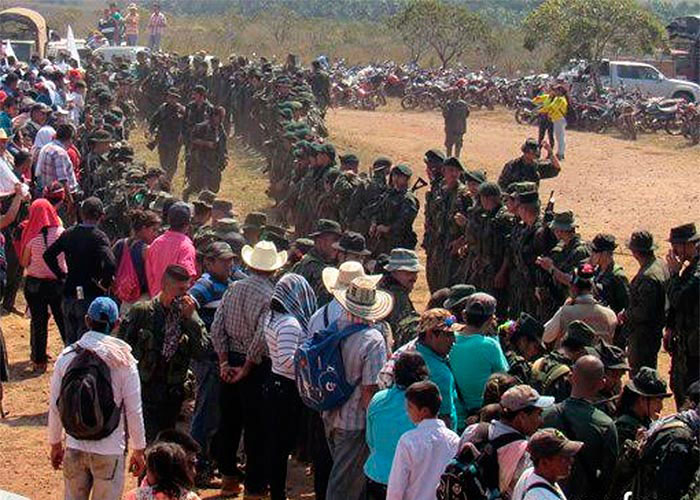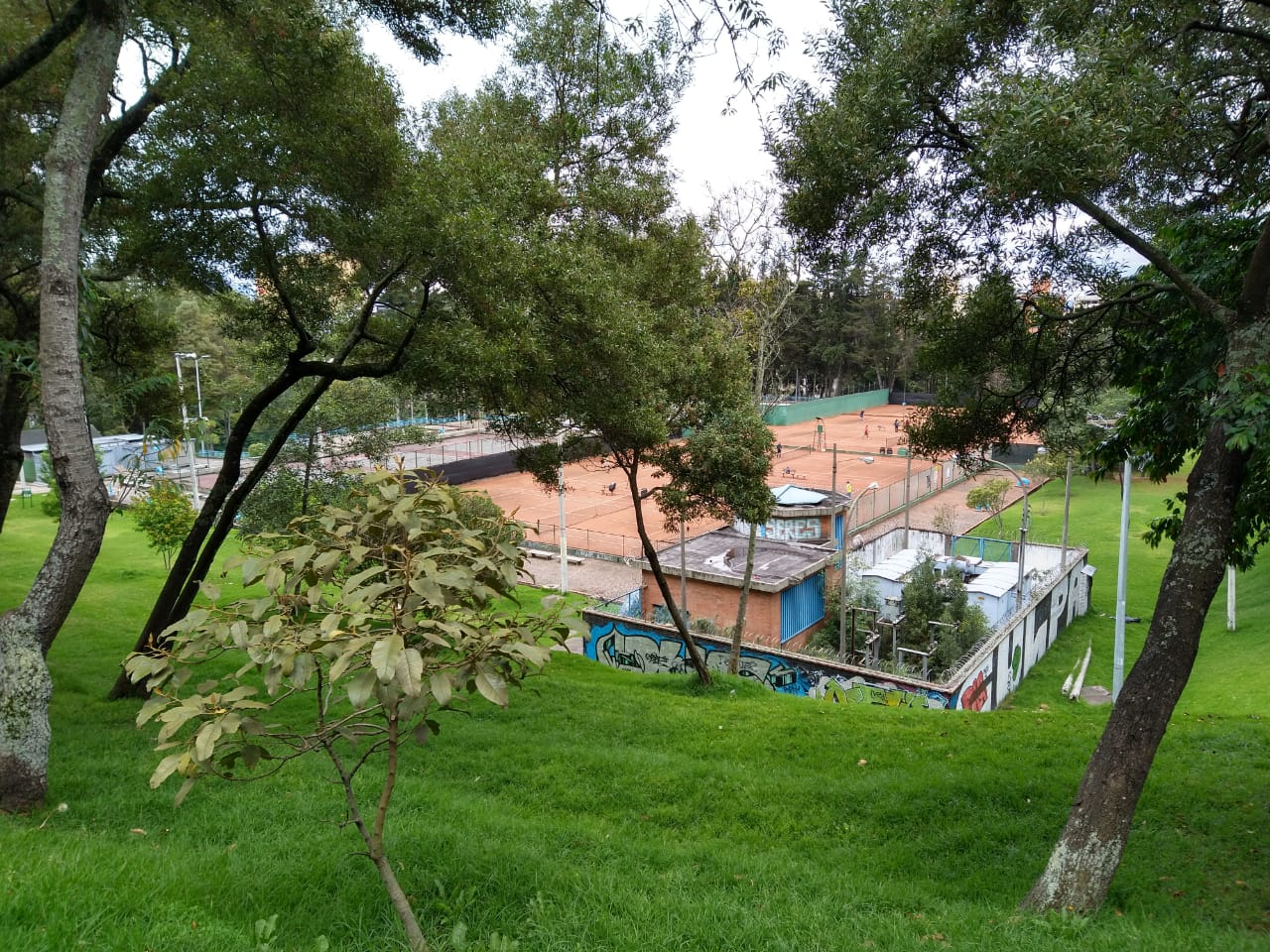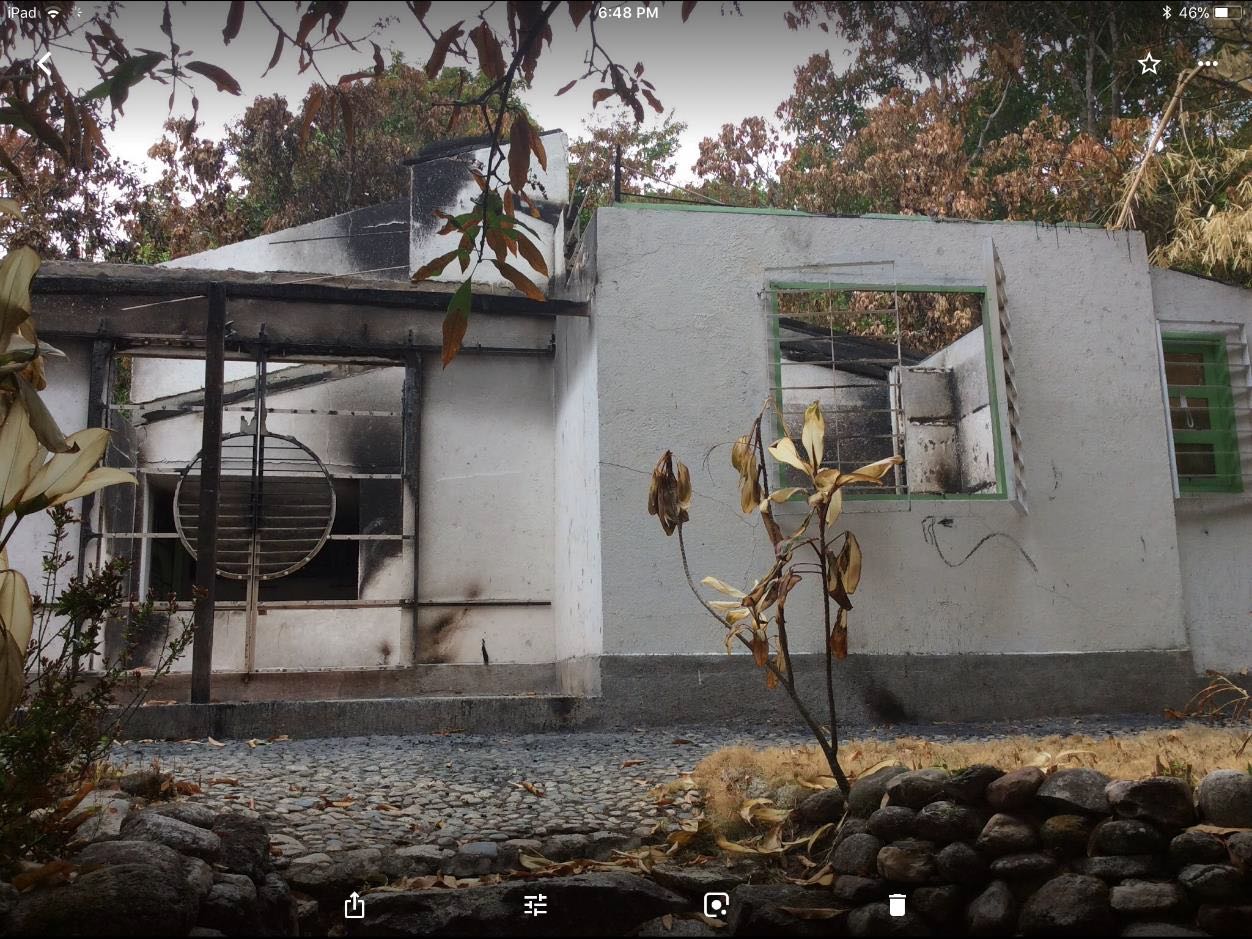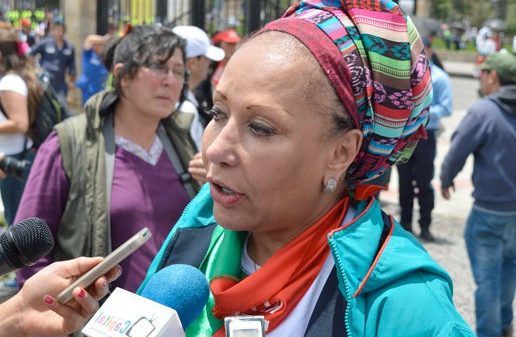
FARC troops in La Guajira on February 19, preparing for the arrival of the negotiating commanders from Havana, which caused such problems for the peace talks. Photo:FARC-EP
Colombia has never been closer to reaching a comprehensive peace agreement with its largest rebel group. Veronika Hoelker takes an in-depth look at just a few of the unresolved issues at the negotiating table.
Colombia has never been closer to reaching a comprehensive peace agreement with its largest rebel group. However, the recent events in Conejo, La Guajira, where a group of FARC commanders arrived in the town in full military regalia, upsetting many observers, have shown just how fragile peace processes can become when one side “violates the rules of the game”. It also shows how important it is to clearly define and follow these rules, something the government has rectified recently in announcing a revised protocol for the FARC to carry out pedagogical trips and inform their combatants about the peace agreements.
One of the main reasons the current peace process has been able to survive such ruptures is that it operates on the basis of an ‘operational rulebook’ – a set of standards laid out in the 2012 agreement that inaugurated the peace talks. Subjecting both negotiating parties to such rules has helped put negotiations back on track after incidents such as the one in Conejo, as it forces both parties to stick to the previously agreed agenda and avoid any procedural loopholes.
These rules will become void with the signing of a final agreement, and the parties should take advantage of them while they can. Not only does that entail reaching definitive agreements on the remaining agenda items (“End of the Conflict” and “Implementation”), but it also means filling some of the gaps – and there are many – in the already existing partial agreements.
The following are just three of the pending issues within the victims’ agreement:
The Truth Commissioners
The agreement envisages the creation of an independent, extrajudicial Truth Commission tasked with unveiling the truth about serious human rights violations and breaches of international humanitarian law. It will operate for three years following the signing of a final peace agreement and publish a comprehensive report on its findings that will be made available to all citizens. We know that the Truth Commission will consist of 11 commissioners, but the agreement does not specify who they will be. Instead, it simply states that they will be chosen by a ‘committee’, a body that still needs to be created jointly by the national government and the FARC-EP before the end of negotiations.
The judges within the Special Jurisdiction for Peace
There is also no clarity yet as to how the judges of the peace tribunal will be appointed. The agreement only tells us that it will be made up of Colombian judges and a minority of foreigners. The FARC-EP and the government have committed themselves to agreeing on a selection procedure prior to reaching a final agreement. This is by no means a mere technicality. Special courts responsible for trying the most serious war criminals in transitional periods are often prone to politicisation. Guaranteeing the tribunal’s integrity and independence is absolutely vital and hinges on a fair and transparent appointment of its judges.
Political crimes and the amnesty law
As is the case in most transitional periods, the issue of amnesty in Colombia has led to a great deal of controversy. The victims’ agreement stipulates that amnesties and pardons may be granted to those responsible for “political and connected crimes”. While the Colombian penal code provides guidelines for the definition of political crimes, it is fuzzy on what can and cannot be considered a connected crime. Although the victims’ agreement defines connected crimes as those “committed to facilitate, support or finance acts of rebellion”, an amnesty law is needed to unequivocally specify the extent of this connectivity. This will also necessitate solving the contentious issue of whether or not drug trafficking constitutes a connected crime. Clearly, it is in the interests of both parties to come to an agreement on this before they leave the negotiating table. The last thing a post-conflict Colombia needs is vague regulations on the granting of amnesties.
The task of wrapping up the peace talks by March 23 seems daunting, considering that these are only three examples of what is left on the delegation’s to-do list. It may even seem preferable to extend the deadline a few months, make sure all the important gaps are filled, and avoid opening a can of worms in the aftermath of the negotiations. The fact that the peace process has come so far will likely be a motivating factor for both sides to take the pending issues seriously. The general agreement’s rulebook may be of use here again as, after all, it reminds the negotiating parties that “nothing is agreed until everything is agreed”.
Veronika Hoelker holds a Master’s degree in International Relations of the Americas from UCL and currently works at the Bogotá-based NGO the Permanent Committee for the Defense of Human Rights. Veronika assists the judicial advisers at the NGO in matters related to transitional justice and the Colombian peace process in general.





